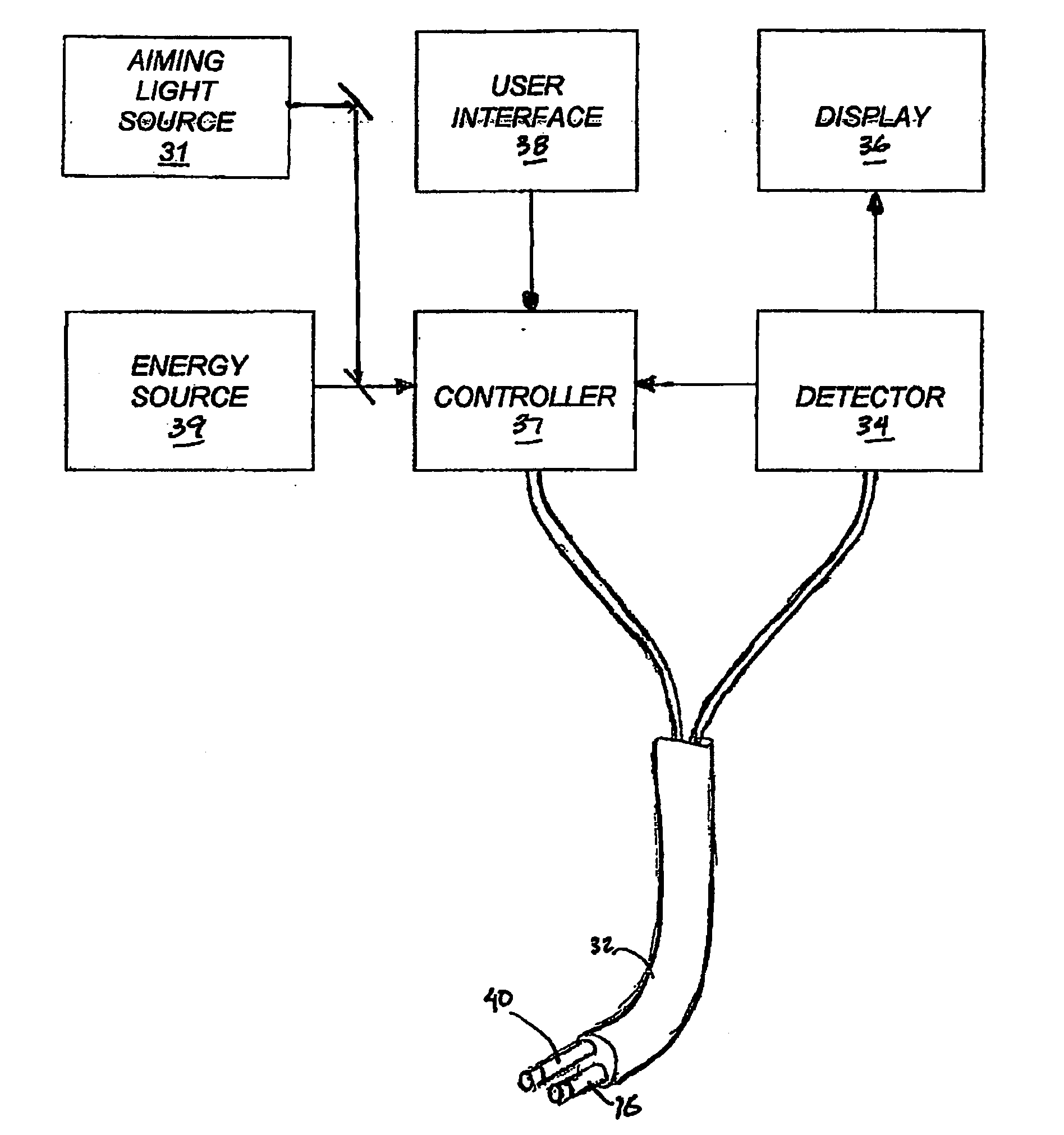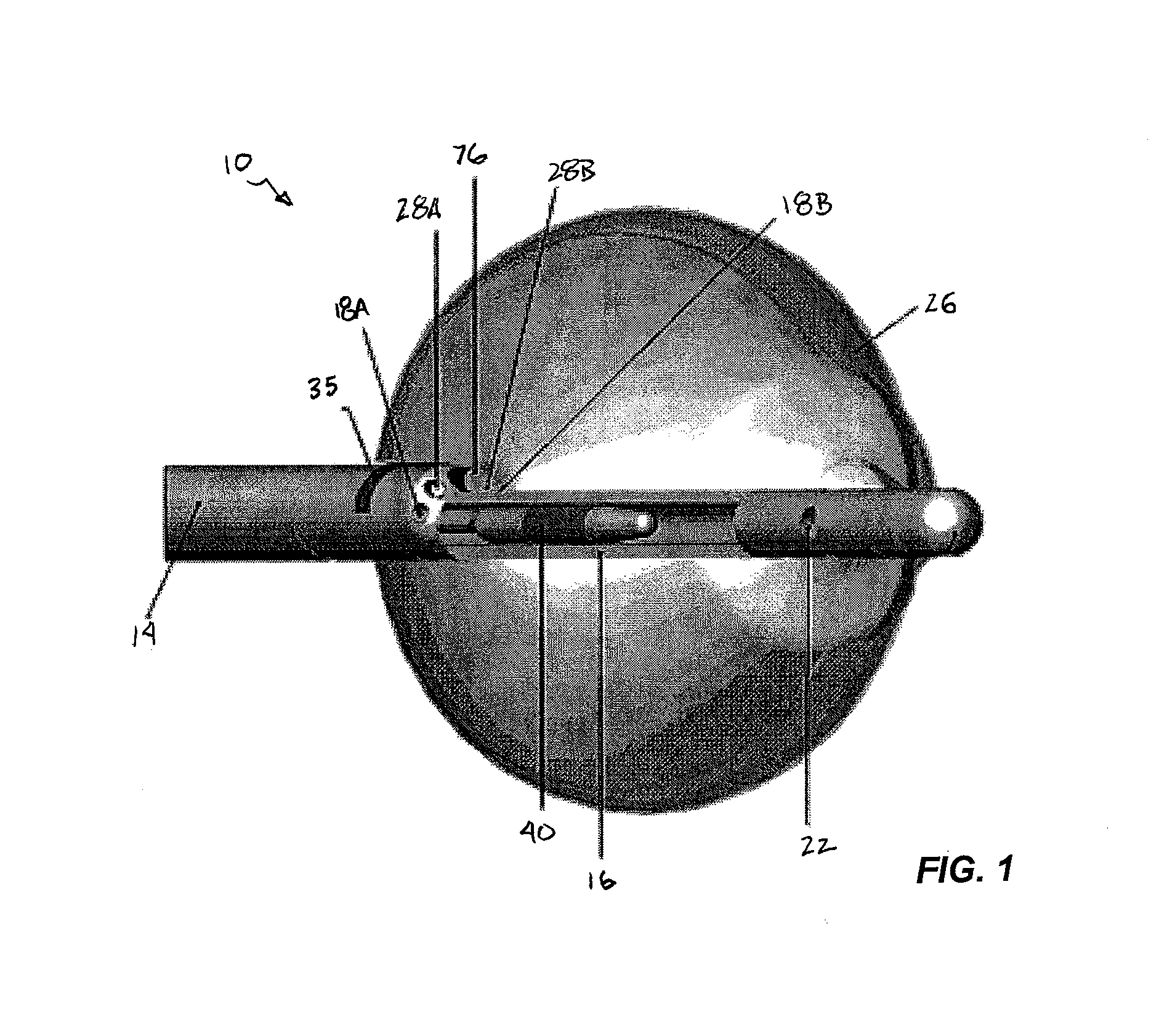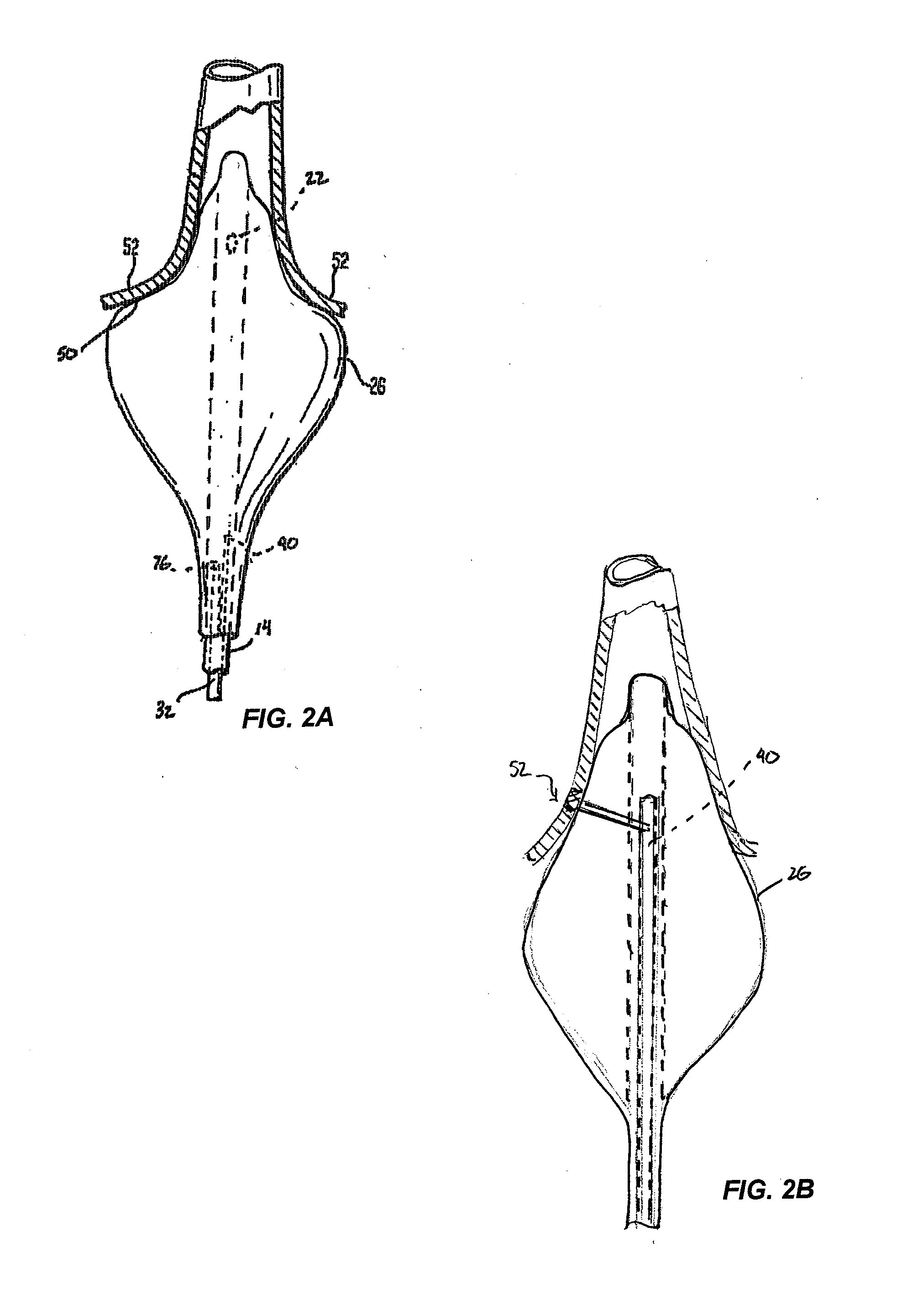Cardiac ablation catheters for forming overlapping lesions
a catheter and atria technology, applied in the field of ablation instruments, can solve the problems of ineffective quivering, inability to achieve asymmetric atria, and inability to efficiently atria, and achieve the effect of avoiding atria resection, avoiding resection, and avoiding resection
- Summary
- Abstract
- Description
- Claims
- Application Information
AI Technical Summary
Benefits of technology
Problems solved by technology
Method used
Image
Examples
Embodiment Construction
[0060]FIG. 1 provides a schematic, cross-sectional view of an ablation instrument 10 according to the invention, including an elongate body 14, a central lumen tubing 16 and a compliant balloon 26 inflatable via one or more ports 22 in the central tubing. The central tubing 16 can also house an energy emitter that is capable of both axial movement and rotation within the tubing 12. Within the elongated body (also referred to herein as the catheter body) there can be a plurality of additional lumens, through which certain devices or instruments can been passed. For example, as shown in FIG. 1, the catheter body 14 also provides lumens 18A and 18B for extraction (or circulation) of a inflation fluid, an endoscope 76 and illuminations fibers 28A and 28B. The catheter body can carry a marker to assist the clinician in proper placement of the device, e.g., a radiopaque marker to aid in fluoroscopic detection.
[0061]As shown in FIG. 2A, the instrument is preferably designed such that upon ...
PUM
 Login to View More
Login to View More Abstract
Description
Claims
Application Information
 Login to View More
Login to View More - R&D
- Intellectual Property
- Life Sciences
- Materials
- Tech Scout
- Unparalleled Data Quality
- Higher Quality Content
- 60% Fewer Hallucinations
Browse by: Latest US Patents, China's latest patents, Technical Efficacy Thesaurus, Application Domain, Technology Topic, Popular Technical Reports.
© 2025 PatSnap. All rights reserved.Legal|Privacy policy|Modern Slavery Act Transparency Statement|Sitemap|About US| Contact US: help@patsnap.com



